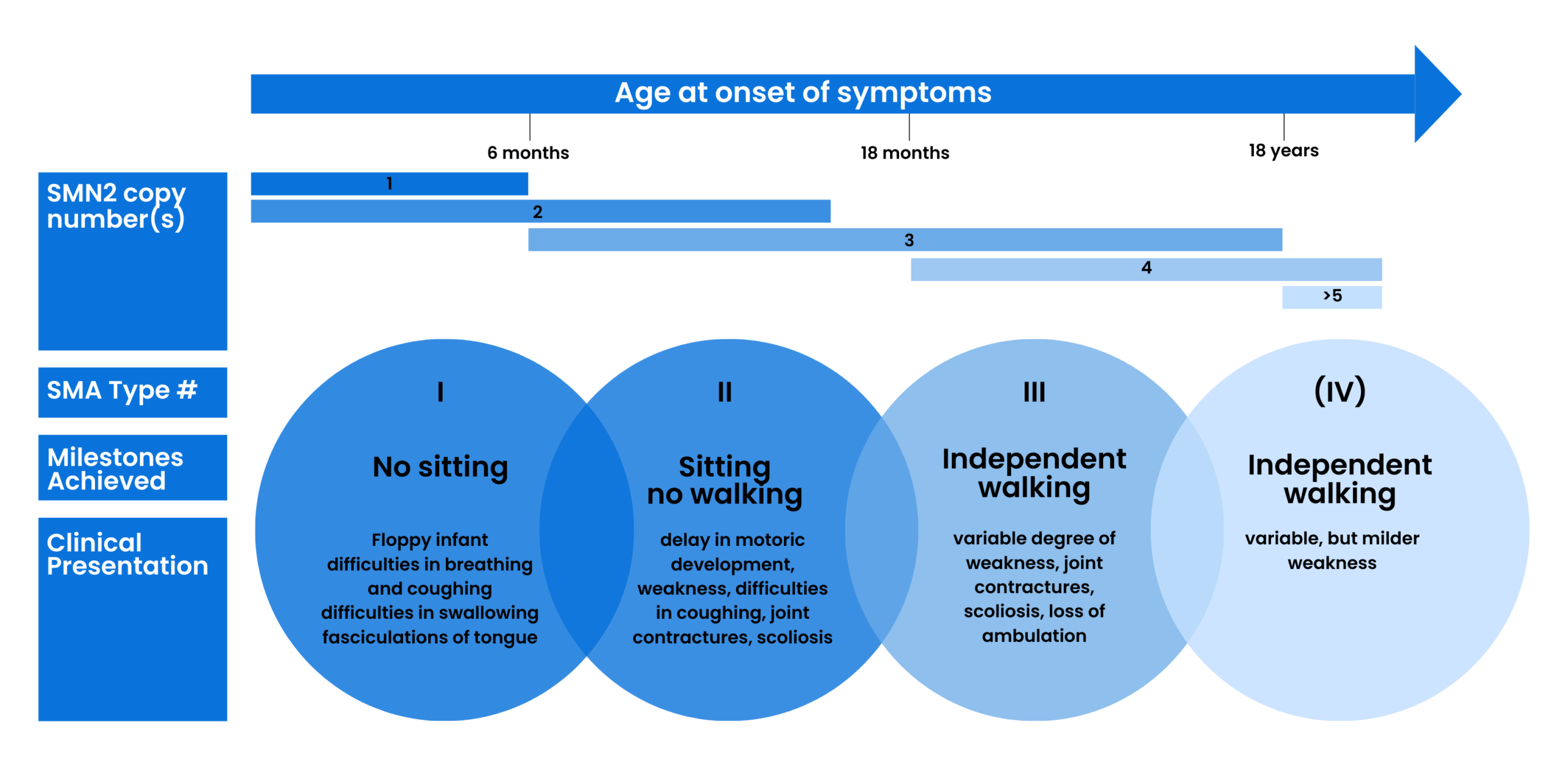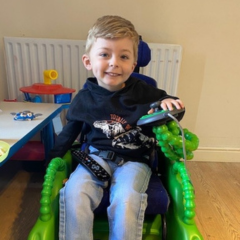Symptoms & Effects of 5q Spinal Muscular Atrophy
Symptoms & Effects of 5q Spinal Muscular Atrophy
The ‘Natural History’ of SMA
Before the new drugs for 5q SMA were developed, clinicians studied the effects of SMA on people. This is called the ‘natural history’ of the condition.
This led to 5q SMA being divided into four main Types of SMA: Types 1, 2, 3, and 4. Sometimes a baby is affected before birth; this is called Type 0.
These ‘Types’ of SMA are based on the age that symptoms begin, and what physical milestones (e.g. sitting, standing, walking) are achieved. Clinicians agreed that there could be variation both within and between ‘Types’.
What would the ‘natural history’ of my child’s / my SMA look like?
- Children, young people and adults will have started to show symptoms. These will have led to tests confirming they have SMA.
- A baby may have been diagnosed with SMA because:
- of their symptoms
- they were part of the Oxford -Thames Valley-Wessex SMA newborn screening study > and been diagnosed with SMA. This study has now closed.
- they have been part of the ongoing Generation Research Study > and been diagnosed with SMA.
To try to answer this question, a specialist clinician will examine any child or adult with suspected SMA.
They will also consider:
- the age of the child or adult when the SMN1 gene deletion test confirmed SMA
- any symptoms of SMA and when these first started
- how many SMN2 gene copies the test result showed
- any family history of SMA
They will refer to this summary:

Clinical classification of SMA subtypes according to onset, milestones achieved, and clinical presentation. Typically associated SMN2 copy numbers are shown. Figure taken with permission from Schorling D et al. (2019) Advances in Treatment of Spinal Muscular Atrophy – New Phenotypes, New Challenges, New Implications for Care J Neuromuscul Dis 7: 1-13, under the CC BY-NC 4.0 licence.
Was this page useful?
 Version 5
Version 5
Author: SMA UK Information Production Team
Last updated: June 2025
Next full review due: June 2028
Links last checked: June 2024
This page, and its links, provide information. This is meant to support, not replace, clinical and professional care.
Find out more about how we produce our information.




